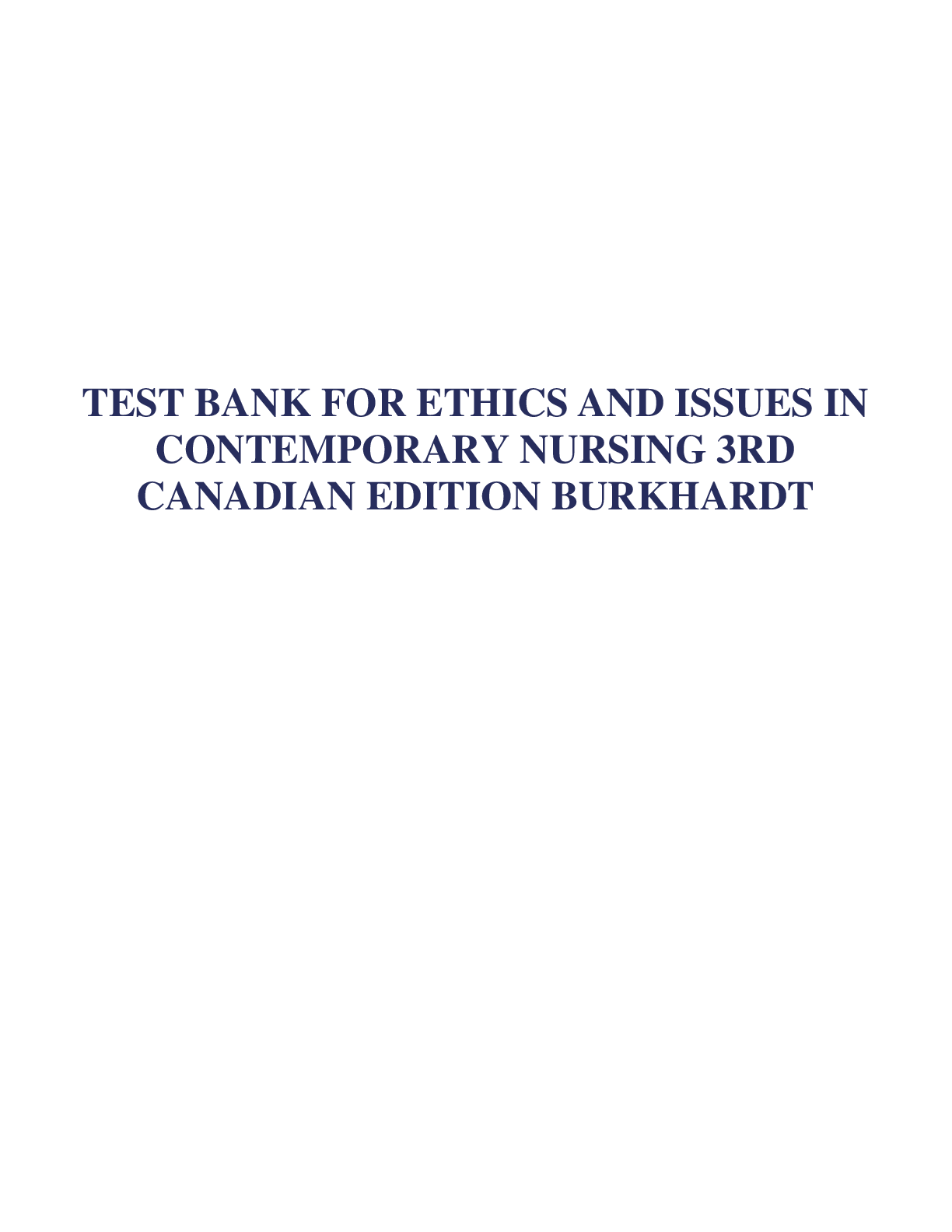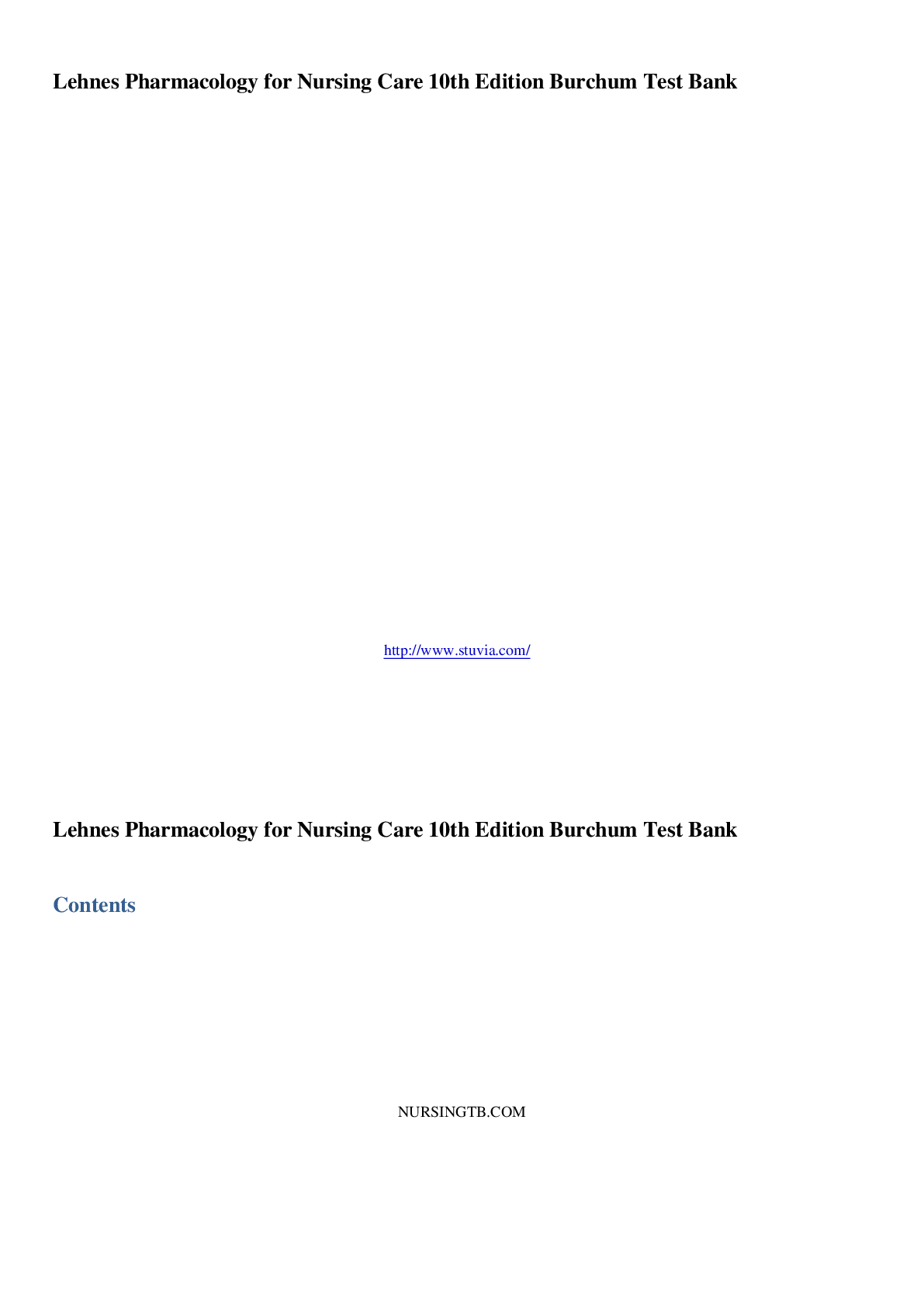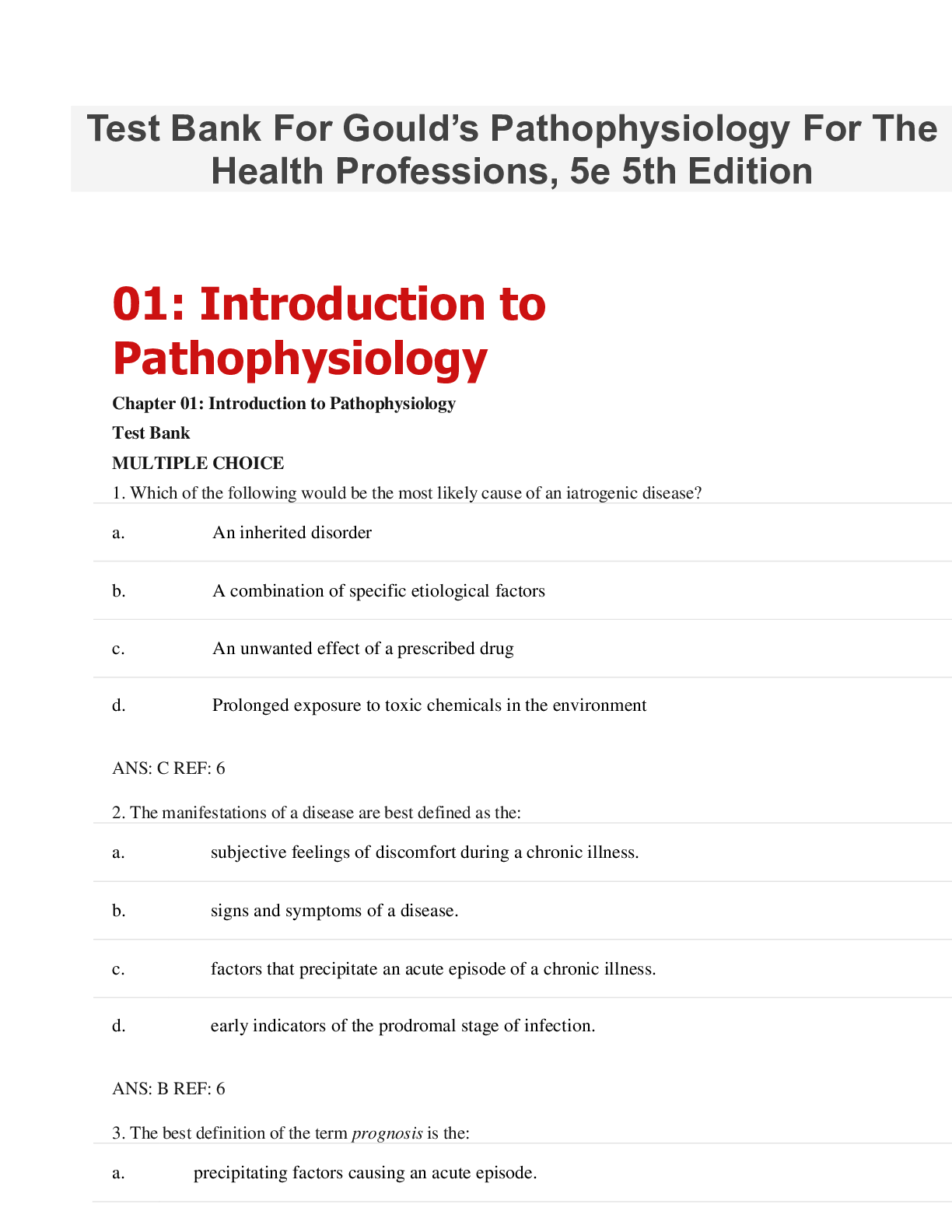Pathophysiology > TEST BANK > TEST BANK GOULD's PATHOPHYSIOLOGY FOR THE HEALTH PROFESSIONS 6TH EDITION >CHAPTER 1-26<COMPLETE GUID (All)
TEST BANK GOULD's PATHOPHYSIOLOGY FOR THE HEALTH PROFESSIONS 6TH EDITION >CHAPTER 1-26<COMPLETE GUIDE SOLUTION RATED A+.
Document Content and Description Below
1. Which of the following would be the most likely cause of an iatrogenic disease? a. An inherited disorder b. A combination of specific etiological factors c. An unwanted effect of a prescribed dr... ug d. Prolonged exposure to toxic chemicals in the environment ANS: C REF: 6 2. The manifestations of a disease are best defined as the: a. subjective feelings of discomfort during a chronic illness. b. signs and symptoms of a disease. c. factors that precipitate an acute episode of a chronic illness. d. early indicators of the prodromal stage of infection. ANS: B REF: 6 3. The best definition of the term prognosis is the: a. precipitating factors causing an acute episode. b. number of remissions to be expected during the course of a chronic illness. c. predicted outcome or likelihood of recovery from a specific disease. d. exacerbations occurring during chronic illness. ANS: C REF: 7 4. Which of the following is considered a systemic sign of disease? a. Swelling of the knee b. Fever c. Pain in the neck d. Red rash on the face ANS: B REF: 6 5. Etiology is defined as the study of the: a. causes of a disease. b. course of a disease. c. expected complications of a disease. d. manifestations of a disease. ANS: A REF: 5 6. A type of cellular adaptation in which there is a decrease in cell size is referred to as: a. hypertrophy. b. metaplasia. c. anaplasia. d. atrophy. ANS: D REF: 8 NURSINGTB.COM GOULDS PATHOPHYSIOLOGY FOR THE HEALTH PROFESSIONS 6TH EDITION HUBERT TEST BANK NURSINGTB.COM 7. A change in a tissue marked by cells that vary in size and shape and show increased mitotic figures would be called: a. metaplasia. b. atrophy. c. dysplasia. d. hypertrophy. ANS: C REF: 8 8. A deficit of oxygen in the cells usually due to respiratory or circulatory problems is called: a. apoptosis. b. ischemia. c. hypertrophy. d. necrosis. ANS: B REF: 9 9. When a group of cells in the body dies, the change is called: a. ischemia. b. gangrene. c. hypoxia. d. necrosis. ANS: D REF: 10 10. Rigorous weight lifting/body building regimens may result in the skeletal muscle cells undergoing: a. hypertrophy. b. dysplasia. c. atrophy. d. regeneration. ANS: A REF: 8 [Show More]
Last updated: 2 years ago
Preview 1 out of 210 pages

Buy this document to get the full access instantly
Instant Download Access after purchase
Buy NowInstant download
We Accept:

Reviews( 0 )
$17.00
Can't find what you want? Try our AI powered Search
Document information
Connected school, study & course
About the document
Uploaded On
Feb 28, 2023
Number of pages
210
Written in
Additional information
This document has been written for:
Uploaded
Feb 28, 2023
Downloads
0
Views
68























